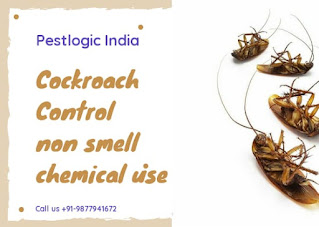Know your Pest - Booklice (Psocid)
Know your Pest - Booklice (Psocid)
Booklice, scientifically known as psocids or Psocoptera, are tiny insects that are commonly found in various environments, particularly in areas with high humidity. Despite their name, booklice do not feed on books but are more commonly associated with damp and moldy conditions. Here's more information about booklice:
Appearance:
- Booklice are extremely small, ranging from 1 to 2 millimeters in length. They have soft bodies, and their color can vary from pale yellow to gray or brown. Their appearance is often described as oval or elongated.
Habitat:
- Booklice thrive in humid environments and are often found in areas with high moisture content. Common habitats include damp basements, kitchens, bathrooms, and areas affected by water leaks.
Diet:
- Booklice feed on a variety of organic matter, including fungi, mold, algae, pollen, and decaying plant material. They are not parasitic and do not feed on blood, fabric, or paper as some other pests might.
Indoor Presence:
- Indoors, booklice can be found in stored food products, cereals, moldy grains, and even in the bindings of books. They are attracted to high humidity levels and often infest areas with water damage.
Life Cycle:
- The life cycle of booklice includes egg, nymph, and adult stages. They reproduce rapidly in favorable conditions, and the entire life cycle can be completed in a matter of weeks.
Seasonal Activity:
- Booklice are active year-round, but their populations may increase during periods of high humidity. They are more commonly noticed in homes during the warmer months.
Damage:
- While booklice are not known to cause direct harm to humans or structures, their presence can be an indicator of underlying issues such as water leaks or excessive humidity, which can lead to mold growth.
Control Measures:
- Controlling booklice involves addressing the conditions that favor their presence. This includes reducing humidity levels, fixing leaks, improving ventilation, and regularly cleaning and airing out spaces.
Natural Predators:
- Booklice have natural predators such as spiders, centipedes, and other insects. Encouraging the presence of these natural predators can help control booklice populations.
Preventive Measures:
- To prevent booklice infestations, it's essential to maintain a clean and dry environment. Proper ventilation, dehumidifiers, and regular cleaning can significantly reduce the likelihood of their presence.
While booklice are not harmful to humans, they can be a nuisance, and their presence may indicate underlying moisture issues. Addressing these conditions is key to controlling and preventing booklice infestations in homes and other indoor spaces.
Pestlogic India - +91-9877941672




.jpeg)



Comments